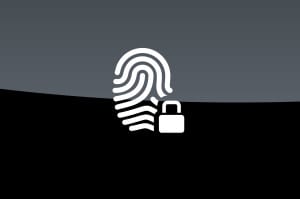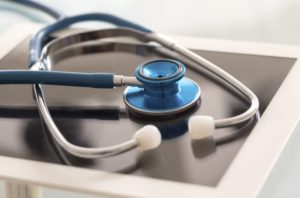Healthcare is a vast market when it comes to biometric applications. As we explored in last week’s Healthcare Month 2016 primer, strong authentication and vital sign measuring technology have the potential to revolutionize the way doctors and patients interact.
For many people, the face of healthcare is found at the clinic and the pharmacy. Outpatients—people who seek medical care but are not admitted to the hospital—are extremely common. According to the Center For Disease Control (CDC) there were 1 billion physician office visits in 2010 (the most recent surveyed year) and of those encounters the most frequently cited motivating symptom was a cough. Meanwhile, the care administered at outpatient facilities is critical. An early diagnosis of a chronic problem can mean the difference between life and death for some, and the medical files and drugs within the facilities require the utmost protection.
Biometrics solutions can make the face of healthcare more efficient and secure on all fronts. Today we’re going to look at three applications of biometrics that bring security and accountability to outpatient-facing facilities.
Locking Up
 One of the more obvious applications of biometrics in healthcare spaces, especially clinics and pharmacies, is physical access control. By locking drugs in cabinets with keys, they might be off limits to uncommitted thieves, but only with biometrics can the storage of prescribed substances be given the amount of accountability truly suited for the situation.
One of the more obvious applications of biometrics in healthcare spaces, especially clinics and pharmacies, is physical access control. By locking drugs in cabinets with keys, they might be off limits to uncommitted thieves, but only with biometrics can the storage of prescribed substances be given the amount of accountability truly suited for the situation.
Solutions like the Rx DrugSAFE PRO, which seals away medicine behind the protection of a fingerprint scanner, can bring a higher level of trust and accountability to the drug cabinet. Only those who have been enrolled in the biometric system are able to gain access to its contents, so lost or stolen keys no longer serve as a problem.
Furthermore, some biometrics secured solutions automate record keeping as well, adding even more trust to the situation. The ClinixSafe line of narcotics cabinets from MedixSafe are built for clinic and pharmacy deployments and—in addition to protecting drugs behind biometric, pin and smartcard security—track safe access in real time.
Being on Time
 When we talk about healthcare and biometrics, usually it’s regarding the protection of sensitive materials and the mitigation of health fraud. But clinics need to beware of another type of fraud behind the stethoscope: time theft.
When we talk about healthcare and biometrics, usually it’s regarding the protection of sensitive materials and the mitigation of health fraud. But clinics need to beware of another type of fraud behind the stethoscope: time theft.
In India the problem of truant or absent clinicians has triggered a response from the government. In Delhi biometric time and attendance technology is being deployed so that patients aren’t left unattended in healthcare facilities. Facilities in Haryana state might be following that example soon, after recent reports that pregnant woman was allegedly left unattended to in a healthcare center in Panipat—an oversight highly reported by the media which become a motivating factor in turning to biometrics. Strong authentication, in this round about way, can also curb bad press.
Of course, biometric time and attendance will bring benefits beyond encouraging a more accountable staff. As with all deployments of biometric office administration, efficiency comes hand in hand with accountability.
For the Record
 Electronic health records (EHR) are a big deal in healthcare. By having digital access to a patient’s file, a health professional can better treat, diagnose and prescribe a visitor without going through the tedious and inefficient processes associated with paper documents. Health records, however, are some of the most valuable pieces of identity data, and therefore demand the highest levels of protection. That’s where biometrics tech comes in.
Electronic health records (EHR) are a big deal in healthcare. By having digital access to a patient’s file, a health professional can better treat, diagnose and prescribe a visitor without going through the tedious and inefficient processes associated with paper documents. Health records, however, are some of the most valuable pieces of identity data, and therefore demand the highest levels of protection. That’s where biometrics tech comes in.
Companies like Caradigm and Allscripts—both of which are healthcare partners of BIO-key International—allow for the secure use of EHR. Rx Safes also recently expanded its product line to serve secure health record solutions with its fingerprint-secured mobile EHR device: RxSafeEHR. Solutions like these ensure that the only people with access to the health records are the patients and authorized personnel.
Again, with biometric access and EHR we see strong authentication adding trust and accountability where it is most needed and as a result allowing for more efficient care.Biometrics improve the clinic and the pharmacy by ensuring accountability on both sides of the counter. Service, security and convenience are all improved through new strong authentication technologies, improving the health and trust of communities.
*
Join FindBiometrics throughout February as we continue to examine biometrics in healthcare. Join in the conversation by following us on Twitter and tweeting with the hashtag #FBHealthcare.
—
February 11, 2016 – by Peter B. Counter


Follow Us